Arm Lift in Bali
Search and Compare the Best Clinics and Doctors at the Lowest Prices for Arm Lift in Bali

Find the best clinics for Arm Lift in Bali
No pricing info available
Thailand offers the best prices Worldwide
Price: $ 26
RSU BaliMéd Negara, located in Jembrana, Bali, Indonesia offers patients Arm Lift procedures among its total of 354 available procedures, across 12 different specialties. Currently, there's no pricing information for Arm Lift procedures at RSU BaliMéd Negara, as all prices are available on request only. There is currently a lack of information available on the specialists practicing at the Hospital, and they are not accredited by any recognized accreditations institutes
Balimed Denpasar, located in Denpasar, Bali, Indonesia offers patients Arm Lift procedures among its total of 354 available procedures, across 12 different specialties. Currently, there's no pricing information for Arm Lift procedures at Balimed Denpasar, as all prices are available on request only. There is currently a lack of information available on the specialists practicing at the Hospital, and they are not accredited by any recognized accreditations institutes
Compare Before & After Photos of _procedure_photos.phpArm Lift


Full-side view
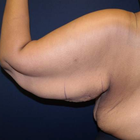
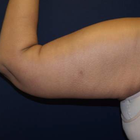
Full-side view
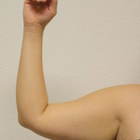
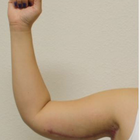
Full-side view
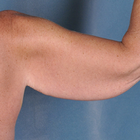
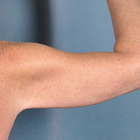
Full-side view

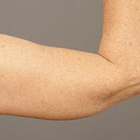
Full-side view

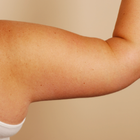
Full-side view
WHY US?
At Medijump, we're making medical easy. You can search, compare, discuss, and book your medical all in one place. We open the door to the best medical providers worldwide, saving you time and energy along the way, and it's all for FREE, no hidden fees, and no price markups guaranteed. So what are you waiting for?

Free

Best Price

Widest Selection

Risk-Free
What you need to know about Arm Lift in Bali
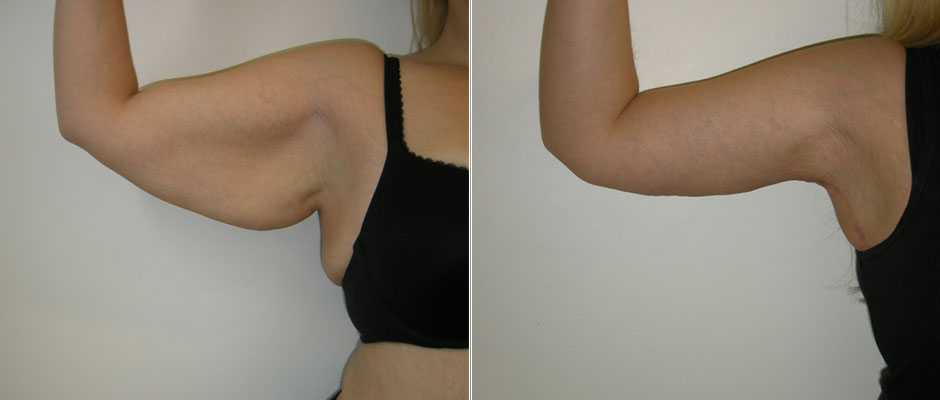
An arm lift, also known as a Brachioplasty, is a cosmetic surgery to treat sagging underarms and the connecting area of the chest wall. The surgery improves the appearance of the under portion of a person’s upper arm. It reduces extra skin, removes excess fat, tightens and smooths the underlying tissue that defines the shape of the upper arm. The surgery can make your upper arms look more defined and toned.
As you get older, your skin changes and becomes loose, particularly the skin on your upper arms. Genetics and significant weight loss also play a role in the development of drooping upper arms. While exercise can strengthen the muscle tone in your upper arm, it cannot correct excess skin that has lost its elasticity.
You might consider this procedure if the undersides of your upper arm appear loose or sagging due to excess skin and fat. Since it can improve your appearance, many people who had the procedure found that it boosted their body image.
In general, good candidates for an arm lift surgery are individuals with significant upper arm skin laxity, individuals who are not significantly overweight, and healthy individuals without medical conditions, as it can increase the risk of surgery.
What is the cost of undergoing the Arm Lift in Bali?
The cost of an Arm Lift varies depending on multiple factors. These include the surgeon's fees, which can vary significantly based on the surgeon's experience and geographical location, the cost of the anesthesia, the clinical facility's charges, and any additional expenses such as lab tests and post-surgery garments.
Insurance usually does not cover the cost of an Arm Lift, as it's considered a cosmetic procedure. However, many surgeons offer patient financing plans to make the procedure more affordable. As prospective patients approach this decision, it's vital to remember that the surgeon's experience and your comfort should always take precedence over cost.
How Long Should I Stay in Bali for a Arm Lift Procedure?
The length of stay following the arm lifts in Bali varies from patient to patient. Some individuals might need one to two nights of hospital stay, especially if the procedure was extensive or if the individual has other chronic health conditions that need monitoring. However, in many cases, individuals will be discharged on the same day when the surgical procedure is completed, contingent on the recovery from anesthesia and initial post-operative stability. It's important that the individual has a support system in place to assist during the first few days. Typically, persons getting an arm lift should expect to stay in the region for a week to two weeks for the initial recovery and follow-up. A longer stay might be necessary if there are complications.
What's the Recovery Time for Arm Lift Procedures in Bali?
The recovery period of an arm lift is typically short as long as you follow your surgeon’s postoperative care instruction. You may be able to return to work and resume some light activities within two weeks, and you should be able to return to your normal daily routine in six weeks. The surgeon may get you to wear a compression sleeve for a few weeks to keep your swelling down. However, allow six months before doing any strenuous and athletic activities, such as sport, because it might stretch the incision. The healing time for your swelling may take two to three months. Contact your doctor immediately if you experience shortness of breaths, irregular heartbeat, chest pains, a fever, or redness of the skin.
What does a Arm Lift Procedure Involve?
Before the actual procedure, your plastic surgeon will likely review your medical history and ask you about any medications you are taking or have taken recently. You may be required to do a physical exam to determine the treatment options, a chest X-ray, and an electrocardiogram. You can also discuss your expectations in terms of appearance post-surgery. During this discussion and evaluation, be sure to ask your surgeon questions and tell them your concerns because it is very important to understand all aspects of an arm lift procedure, such as the benefits and risks. If you smoke, your surgeon will ask you to stop around one or two months before the surgery to reduce the risk of complications.
The surgery can be performed in a hospital or an outpatient surgical facility. Your surgeon will start by marking on the underside of your arms where they plan to make incisions. The incision length depends on the amount of excess skin to be removed and generally placed on the inside or the back of the arm. Then, you are given either general or local anesthesia. Your surgeon will recommend the best choice for you.
Guided by the marks on your arms, your surgeon tightens and reshapes the tissue in your upper arms. Then they pulls your skin back over the tissue and secures it with stitches. If you have any excess fat in the area, suction technique (liposuction) may also be used to remove the fat. Finally, your skin is smoothed over the new contours and excess skin is removed. The whole procedure normally takes two to three hours to finish.
What sort of Aftercare is Required for Arm Lift Procedures in Bali?
Your surgeon will give you aftercare instructions, which will cover what medications to take and when, how to take care of your wounds, warning signs, and a timeline for follow up appointments. It is important to strictly follow your surgeon’s aftercare instructions. Your surgeon may prescribe painkillers and to prevent wound infections you may need to take oral antibiotics or topical medications. While recovering, it is essential to avoid smoking because smoking slows down the healing process and will increase your risk of infections and permanent scarring. To maintain the result of arm lift surgery, you will need to maintain a stable weight and general fitness.
What's the Success Rate of Arm Lift Procedures in Bali?
The success rate of a Arm Lift, such as an arm lift, hinges on factors like the patient's overall health, weight stability post-procedure, and the surgeon's expertise. Ensuring the procedure is performed by a board-certified plastic surgeon can dramatically optimize outcomes. Patient satisfaction post Arm Lift is typically high, with most studies showcasing rates between 80 to 90 percent. This high success rate is often attributed to improved arm contour, enhanced comfort during physical activities, and boosted self-esteem.
However, success is invariably subjective and varies amongst individuals, so it's critical to set realistic expectations whilst bearing in mind that the aim is enhancement, not perfection. Moreover, the occurrence of complications post arm lift procedures is relatively scarce, particularly when under the experienced hands of a renowned surgeon.When the Arm Lift is performed as part of overall body contouring after significant weight loss, the success rates and patient satisfaction tends to be even higher. This is supported by enhanced quality of life experienced by the patients, resultant of simplified daily routines and renewed self-confidence. Overall, the success of an arm lift procedure extends beyond just physical transformation, contributing largely to the individual's psychological well-being.
Are there Alternatives to Arm Lift Procedures in Bali?
If you prefer less invasive procedures, some alternative procedures can be used instead of arm lift surgery.
- Laser Skin Tightening is perfect for those with mild to moderate skin laxity. Your upper arms will be treated with a high-power surgical laser that can stimulate collagen production in your skin. It involves no scarring, no downtime, and almost no uncomfortable feelings. Nevertheless, the results appear gradually and are not as effective as an arm lift. You might need to undergo multiple treatments before you get to your desired result.
- Mesotherapy is used to melt fat and tighten skin. A solution containing amino acids, medication, and natural ingredients will be injected into the middle layer of your skin. The effects will be visible after four to eight weeks and it may not be effective if you have a lot of excess skin.
Other alternatives are Vaser liposuction, Lipodissolve, Thermage, and massage therapy.
What Are the Risks and Complications of the Arm Lift?
Like any surgical procedure, an Arm Lift also carries some inherent risks. Some common complications include infections, seromas (pockets of fluid), hematoma (blood accumulating under the skin), and unfavorable scarring. Other risks involve changes in skin sensation, adverse reactions to anesthesia, and dissatisfaction with the overall aesthetic outcome. In some rare cases, blood clots can form which can be a serious health hazard. However, these risks are typically minimized in a well-equipped surgical setting and under the care of a board-certified cosmetic surgeon.
What are the preparatory steps required before undergoing the Arm Lift in Bali?
Before undergoing Arm Lift procedure in Bali, thorough preparation is necessary to ensure a smoother process and optimal results. Most clinics require pre-assessment consultations to study your medical history and assess your overall health condition. The healthcare provider may conduct some tests, including blood tests or diagnostic imaging, to rule out any unseen conditions. It's crucial for patients to inform about any current medical conditions, allergies, or any medications or supplements they're currently taking.
Smoking and excessive alcohol intake can interfere with the healing process and result in complications after surgery. Therefore, patients may need to abstain from smoking and limit alcohol consumption for a certain period before and after the procedure. It's also advisable to maintain a stable weight and healthy nutritional habits prior to the surgery. On the day of the operation, most clinics suggest that patients come in comfortable, loose clothing.
Whilst the information presented here has been accurately sourced and verified by a medical professional for its accuracy, it is still advised to consult with your doctor before pursuing a medical treatment at one of the listed medical providers
No Time?
Tell us what you're looking for and we'll reachout to the top clinics all at once
Enquire Now

Popular Procedures in Bali
Prices Start From $20

Prices Start From $85

Prices Start From $167

Prices Start From $120

Prices Start From $931

Prices Start From $76

Prices Start From $236

Recommended Medical Centers in Bali for Arm Lift

- Interpreter services
- Translation service
- Religious facilities
- Medical records transfer
- Medical travel insurance
- Health insurance coordination
- TV in the room
- Safe in the room
- Phone in the room
- Private rooms for patients available

- Interpreter services
- Translation service
- Religious facilities
- Medical records transfer
- Medical travel insurance
- Health insurance coordination
- TV in the room
- Safe in the room
- Phone in the room
- Private rooms for patients available

- Interpreter services
- Translation service
- Religious facilities
- Medical records transfer
- Medical travel insurance
- Health insurance coordination
- TV in the room
- Safe in the room
- Phone in the room
- Private rooms for patients available

- Interpreter services
- Translation service
- Religious facilities
- Medical records transfer
- Medical travel insurance
- Health insurance coordination
- TV in the room
- Safe in the room
- Phone in the room
- Private rooms for patients available

- Interpreter services
- Translation service
- Religious facilities
- Medical records transfer
- Medical travel insurance
- Health insurance coordination
- TV in the room
- Safe in the room
- Phone in the room
- Private rooms for patients available

- Interpreter services
- Translation service
- Religious facilities
- Medical records transfer
- Medical travel insurance
- Health insurance coordination
- TV in the room
- Safe in the room
- Phone in the room
- Private rooms for patients available

- Interpreter services
- Translation service
- Religious facilities
- Medical records transfer
- Medical travel insurance
- Health insurance coordination
- TV in the room
- Safe in the room
- Phone in the room
- Private rooms for patients available

- Interpreter services
- Translation service
- Religious facilities
- Medical records transfer
- Medical travel insurance
- Health insurance coordination
- TV in the room
- Safe in the room
- Phone in the room
- Private rooms for patients available

- Interpreter services
- Translation service
- Religious facilities
- Medical records transfer
- Medical travel insurance
- Health insurance coordination
- TV in the room
- Safe in the room
- Phone in the room
- Private rooms for patients available

- Interpreter services
- Translation service
- Religious facilities
- Medical records transfer
- Medical travel insurance
- Health insurance coordination
- TV in the room
- Safe in the room
- Phone in the room
- Private rooms for patients available
Arm Lift in and around Bali
About Bali
Bali is an Indonesian province located on the west side of the Lesser Sunda Islands. It is the country’s main tourist hotspot that attracts millions of tourists each year. The beaches are tranquil and perfect for any sun-seeker, the marine life is one of the most diverse in the world, the culture is beautiful, and the mountains are covered in lush jungles and great for hiking. In addition to the natural and cultural beauty, there are myriad of things that tourists can do here, from yoga, partying, surfing, to horseback riding.
Bali is not only full of fascinating beaches, but this tropical paradise also boasts many high-quality medical facilities offering various types of treatments. The island continues to upgrade its infrastructure and develop its medical centers to compete with neighboring countries, such as Singapore and Thailand. Medical tourists are able to avail of a wide range of treatments including cosmetic surgery and at affordable rates. The medical centers have modern equipment, and there is little to no waiting time for almost every procedure. Additionally, the island is also equipped with exclusive yoga centers, Bali-traditional spas, and Jamu traditional medicinal herbs.
Popular Areas in Bali
- Seminyak is known to be the most luxurious area in Bali. Tourists will find many fashionable boutiques, upscale restaurants, and exclusive clubs. In the afternoon, tourists can soak up the sun while sipping a cocktail in one of its famous beach clubs or take a beginner surfing lesson at one of its beaches. The main beach is Petitenget Beach where tourists can enjoy magical sunsets or swim in its warm waters. The area is also home to Bali’s best cafés, which makes café hopping a must-do event.
- The Nusa Islands is located around 20 kilometers offshore from the main island and can only be accessed by boat. It consists of three islands: Lembongan, Ceningan, and Penida. The most popular and the closest to the main island of Bali is Nusa Lembongan. The biggest is Nusa Penida and the smallest is Nusa Ceningan. The three islands offer tranquil and almost-empty beaches, which is perfect for anyone who wishes to stay away from crowds.
- Ubud is the island’s jungle paradise that still retains numerous aspects of traditional Balinese. It is the place for tourists who wants to immerse in Bali’s culture and nature. There are various beautiful temples, dance shows, and historical sites within the area. The most popular place is Ubud Monkey Forest or the Sacred Monkey Forest Sanctuary, which is a sacred temple, an evocative jungle, and natural habitat of monkeys.
- Sanur is Bali’s earliest beach resort and is located on the eastern side of the island; it contains some of the island’s first hotels. The area is known to be family-friendly as well as one of the best places to enjoy Bali’s magnificent sunrises. Sanur is very quiet which makes it the perfect place for relaxation. Wander around for a day and you will find many major cultural landmarks hidden in plain sight.
- Canggu is famous for its green rice fields, dark sandy beaches, and healthy food. This up-and-coming area is also filled with cool cafes and vegan restaurants. It is also a prime spot for surfing since the beaches have massive shore breaks. One of the most famous places in the area is the Pura Tanah Lot Temple as it is a famous seaside religious site located on top of a rock formation, which offers a picturesque view.
Weather and Climate in Bali
Bali enjoys warm and comfortable weather all year round. The tropical island experiences two seasons: dry and wet. The dry season starts in April and ends in October. The average temperatures during this season are between 23 °C to 31 °C. June to August are the driest months, making them the best months to visit the island. The wet season is from November to March. Expect to find many rainy days during the wet season. The temperatures are generally similar to the dry season, but the humidity will increase significantly.
Getting Around in Bali
I Gusti Ngurah Rai International Airport is the main gateway to Bali and it is located 13 kilometers south of Denpasar and is the second busiest airport in Indonesia. The airport has international connections with major cities around the globe, including Bangkok, Melbourne, Moscow, and Guangzhou. It also serves domestic flights to many regions within Indonesia. The most affordable way to travel to and from Bali is by flying with budget airlines, such as AirAsia, Citilink, and Lion Air.
There are several ways to get around Bali. Most of the transportation options are very affordable. Hiring a motorcycle is the fastest option, but if you do not like the idea of driving by yourself, you can try the motorcycle taxis known as ‘ojek,’ which can be hailed directly from the streets or by using apps such as Grab and Go-Jek (similar to Uber). The apps also provide private cars and food delivery. Taxis are widely available and run on a meter. The most reliable taxi companies are Blue Bird and Express.
Tourist Visas in Bali
Indonesia is known to be a visa-friendly country since most developed countries can enter without a visa. The country allows a citizen of 170 countries to enter and stay for up to 30 days. Citizens of Japan, the United Kingdom, the United States, and 65 other countries can apply for a visa on arrival. It is best to check at the nearest Indonesia Embassy or Consulate to find out if you need a visa or not. All visitors are required to have a visa valid for at least 6 months.
Additional Information
- Local Currency: Indonesian Rupiah (Rp) is the official currency, and $1 converts to Rp14.000.
- Money & Payments: Tourists will find ATMs that accept international cards almost everywhere (mostly Visa and MasterCard). Credit and debit cards are accepted in many shops, restaurants, and hotels. Tipping is not expected but will be greatly appreciated.
- Local Language: The official language is Bahasa Indonesia, and most people will also speak Balinese. English is widely spoken, especially in tourist areas.
- Local Culture and Religion: Most people in Bali follows Hinduism, and almost every aspect on the island is submerged with the Hindu faith. There is also a large group of Muslims as well as small group groups of Christian and Buddhists.
- Public Holidays: Bali celebrates major religious holidays, including Nyepi (Silent Day), Eid Mubarak, Christmas, and Vesak.
Popular Searches
- Plastic Surgery in Thailand
- Dental Implants in Thailand
- Hair Transplant in Thailand
- Breast Augmentation Thailand
- Gastric Sleeve in Thailand
- Gender Reassignment Surgery in Thailand
- Laser Hair Removal in Bangkok
- Botox in Bangkok
- Dermatology in Bangkok
- Breast Augmentation in Bangkok
- Coolsculpting in Bangkok
- Veneers in Turkey
- Hair Transplant in Turkey
- Rhinoplasty in Turkey
- Stem Cell Therapy in Mexico
- Rhinoplasty in Mexico
- Liposuction in Mexico
- Coolsculpting in Tijuana
- Rhinoplasty in Korea
- Scar Removal in Korea
- Gastric Sleeve in Turkey
- Bone Marrow Transplant in India
- Invisalign in Malaysia
- Plastic Surgery in the Dominican Republic
- Tummy Tuck in the Dominican Republic
- Plastic and Cosmetic Surgery in Poland
- Rhinoplasty in Poland
- Hair Implant in Poland
- Dental Implants in Poland
- IVF in Turkey

